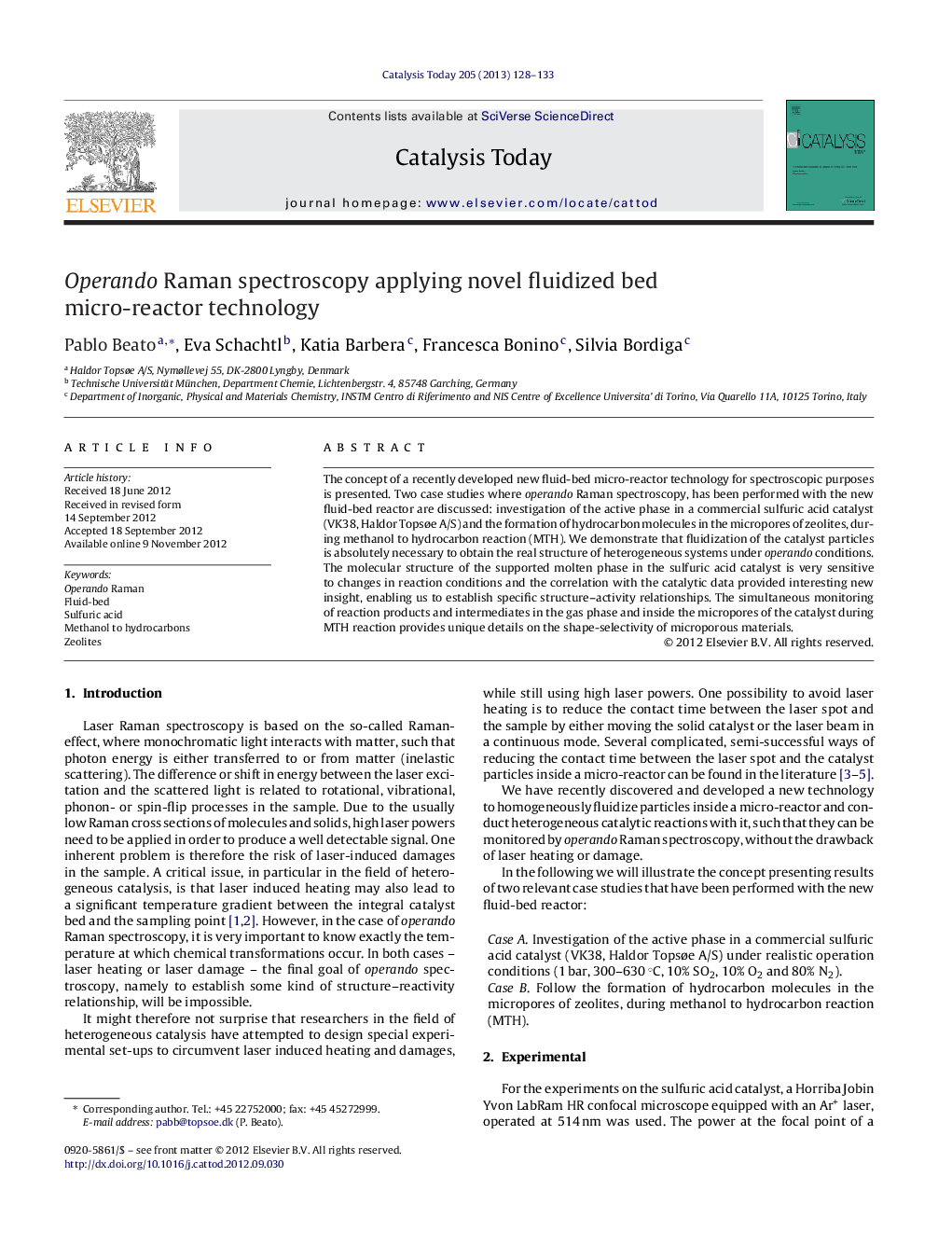| Article ID | Journal | Published Year | Pages | File Type |
|---|---|---|---|---|
| 54938 | Catalysis Today | 2013 | 6 Pages |
The concept of a recently developed new fluid-bed micro-reactor technology for spectroscopic purposes is presented. Two case studies where operando Raman spectroscopy, has been performed with the new fluid-bed reactor are discussed: investigation of the active phase in a commercial sulfuric acid catalyst (VK38, Haldor Topsøe A/S) and the formation of hydrocarbon molecules in the micropores of zeolites, during methanol to hydrocarbon reaction (MTH). We demonstrate that fluidization of the catalyst particles is absolutely necessary to obtain the real structure of heterogeneous systems under operando conditions. The molecular structure of the supported molten phase in the sulfuric acid catalyst is very sensitive to changes in reaction conditions and the correlation with the catalytic data provided interesting new insight, enabling us to establish specific structure–activity relationships. The simultaneous monitoring of reaction products and intermediates in the gas phase and inside the micropores of the catalyst during MTH reaction provides unique details on the shape-selectivity of microporous materials.
Graphical abstractFigure optionsDownload full-size imageDownload high-quality image (249 K)Download as PowerPoint slideHighlights► A novel fluid-bed micro-reactor technology has been discovered and develped for optical spectroscopy. ► The active phase in a commercial sulfuric acid catalyst has been characterized by visible Raman spectroscopy. ► The formation of hydrocarbon molecules in the micropores of zeolites, during methanol to hydrocarbon reaction (MTH) has been monitored by UV–Raman spectroscopy.
